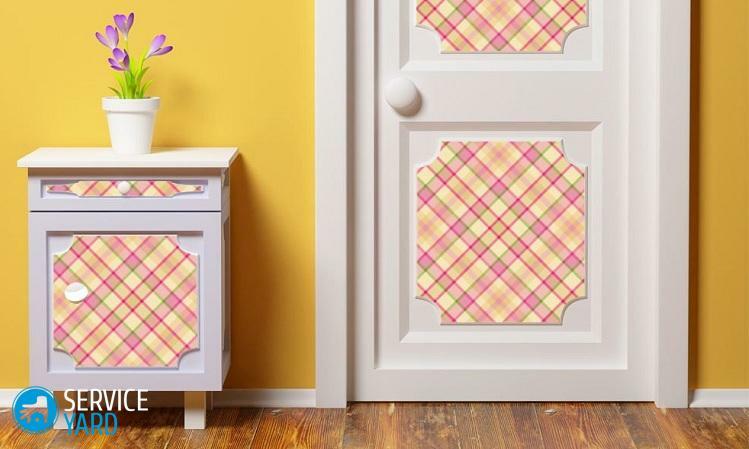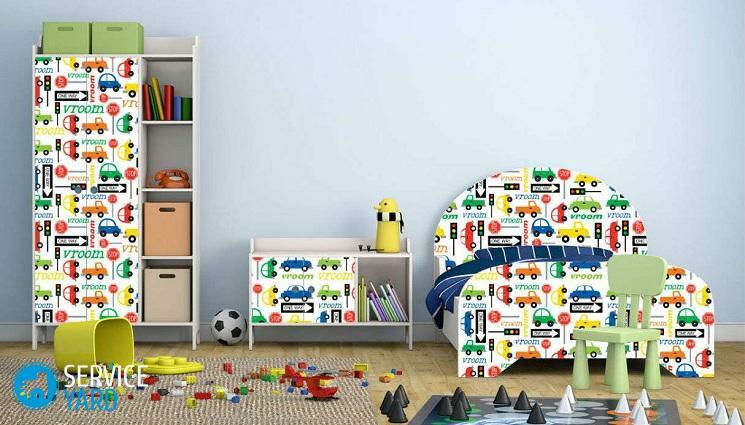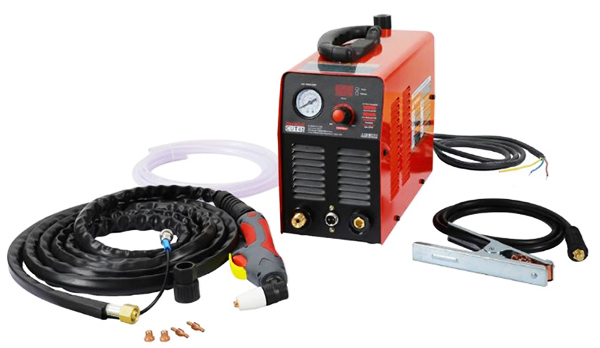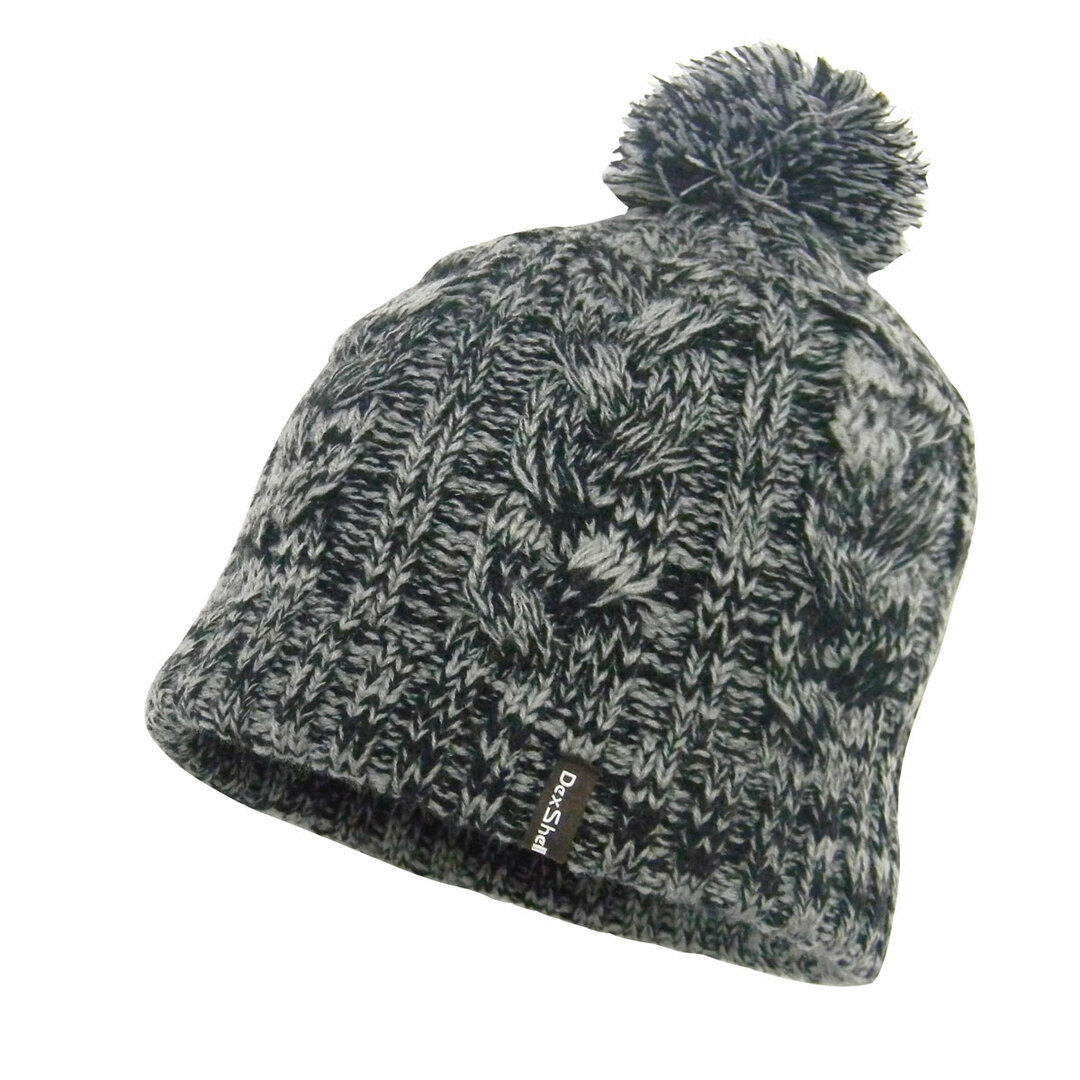
- What is a self-adhesive?
- Film types based on the material of the underlying
- Decorative film capabilities
- How to use the
- self-adhesive film Application technology for self-adhesive film on
- furniture How to glue the cabinet with wallpaper?
Do you want to upgrade the old wardrobe, furniture or interior in the apartment? It is the self-adhesive film that will make your goal a reality! Undoubtedly, this budget option will appeal to you. Doors, a chair can easily be given a wood effect, and the wardrobe is decorated with fashionable patterns. Using self-adhesive film can improve and glass products. Read on, and you will learn all the secrets about this wonderful material, how to decorate your favorite interior items with it, how to properly glue the self-adhesive film on the furniture so that there are no swellings and unevennesses.
to the contents ↑What is a self-adhesive?
Self-adhesive film is a vinyl or plastic film with a decorative design( color, pattern, texture) on one side and an adhesive layer on the other. Glossy paper base protects the adhesive layer from dust and damage until it is used. After cutting, the paper surface is removed, and the film is transferred to the desired surface.
Self-adhesive film, able to implement any design solutions and create a good protection for any interior items. It is universal, and also has several other advantages:
- Good response to environmental effects.
- Long service life.
- A wide range of expensive color rendering effects.
- Excellent contact with any type of substrate.
- Good moisture resistance.
- Easy and easy to clean.
Below we will take a closer look at the kinds of such material as how to correctly stick the self-adhesive film on the furniture.
to content ↑Film types based on the material of the underlying
All materials in this category have combined formulations. The main substances of the linen are:
- Polyvinyl chloride.
- Polyester.
- Propylene.
These materials are sufficiently accessible, reliable and safe. Paper, natural and synthetic fabrics are also used for film production.
Types of films on the structure
On the structure of the canvas are different types of films:
- Single-layer. The composition of this material includes multicomponent mixtures, which include polyvinyl chloride resin and various plasticizers. As auxiliary substances, stabilizers and pigments are also used. Further, all substances are mixed into a homogeneous mass, which, in turn, is formed into a film.
Important! The physicochemical properties and stiffness of the film directly depend on the type of plasticizers added.
- Two-layer. Two separate canvases, the base and the cover are made for the production of two-layer coatings. For a base, fabric or paper is most often used, and for a coating, polyvinyl chloride resin. Various molding methods are used for manufacturing. As a result, more flexible fabrics are obtained, which facilitates the convenience in their application.
Important! The technical characteristics of such materials are somewhat lower than that of a single-layer film.

By the type of the surface of the
canvas The attractiveness of the decorated surface and its combination with other interior objects directly depends on the quality and type of the surface of the self-adhesive film. There are the following types:
- Glossy - suitable for dark rooms.
- Matte - perfectly in harmony with the room, where there is a lot of light.
- Mirror - suitable for any room, including a bathroom.
- Transparent - used for finishing glass surfaces.
- Holographic - for any surfaces to create an original effect.
Decorative film features
The current market provides a wide selection of self-adhesive films for finishing different surfaces. The assortment allows you to select the right coating with accuracy to solve the task. So, all self-adhesive films are divided into two versions.
Standard
The standard version is present in a single-color version of a different color palette and includes such types of simulation:
- Simulation of valuable wood species.
- Simulated stone.
- Ceramic tiles.
- Cloth.
- Canvas.
- The Tapestry.
- Children's stories.
Special Purpose
Special category materials are presented in the form of coatings:
- Under velor.
- Gold, metallic, silver.
- Simulation of the cork cloth.
- Heavy film for furniture, countertops, window sills.
Ways of using
self-adhesive film Often used such material in design, construction, as well as for outdoor and indoor advertising. It can be said that absolutely any objects can be decorated with a self-adhesive film.
Working surface film
With constant load and frequent use, the main working surfaces can be damaged. This applies to kitchen tables, countertops, and furniture in the office.
Important! Tightening the film will avoid rapid damage, in which the profitability of the material is noted.
Self-adhesive film for furniture
Pasting furniture with a film by one's own hands is a rather interesting process:
- Using a film coating, you can give solidity to a room using the texture of natural wood or stone.
- Imitation fabric film is suitable for a more modern target direction.
- You can safely use a film under the velor, which will add some charm and coziness to the room.
Film for a child's room
To create a decorative wall covering with children's drawings, this material is perfect. At the same time, at the request of the child with ease, you can change to any picture you like.
Important! We want to note that the film with a coating for drawing, will help the child in development without damage to the interior. You can draw on it by erasing previous drawings. Good idea, is not it?
Bath film
For self-adhesive film, self-adhesive film is perfect for wall finishing, since the material is moisture resistant and prevents the formation of mold.
Important! If you use a mirror cloth, you can visually expand the space of the bathroom.
Film for doors
Application in this spectrum is widely used for giving an expensive effect, and also for the benefit purpose:
- This coating is able to protect the surface from moisture, which is extremely important for wood doors.
- Also such a cloth is a protection from the formation of scratches and cracks.
- The shades of these coatings are varied, which will perfectly harmonize with the rest of the range of premises.
Important! The door leaf itself can be embedded with imitation wood, and glass - transparent, with the effect of broken glass.

Self-adhesive film for windows
Such material is mainly used for protection against sunlight in the room. Cloths of different degrees of toning will perfectly cope with this problem.
To protect the windowsills from crumbling, a thick film with a protective coating is often used, thus protecting yourself from unplanned costs. Also, the film is used in the production of window profiles. The most common option is imitation of natural wood. As a result, it looks expensive and very affordable in money terms.
Film for glass surfaces
Application of a self-adhesive film will protect fragile surfaces from chips or complete destruction, as well as increase their resistance to shocks. For door inserts and countertops use a film with a stained glass pattern.
Important! Such a film can be safely used as fragments, and to create unusual and attractive patterns on the surface of an individual idea.
to content ↑Application technology for self-adhesive film on
furniture. It is quite easy to apply such material to any surface. You do not need specialists, so you can easily do this simple process. We will reveal all the subtleties of how to properly glue the self-adhesive film on the furniture.
How to paste a self-adhesive film on furniture?
So, to stick a film, do the following:
- Prepare the surface by cleaning it of various contaminants, if necessary - cover with a primer or varnish.
- Cut the film into strips or shaped pieces of the correct size.
Important! If possible, it is better to take a canvas with a small margin, in order to avoid shortage of material.
- Next, it is necessary to remove successively the lower protective layer, rolling the film over the surface, while slightly pulling.
Important! Unevenness of film application can be corrected immediately after application.
To get a high-quality result, we will acquaint you with the main recommendations for each process:
- For the treatment of glass surfaces, use a combination of water and detergent for washing dishes. This will remove dust and degrease the surface.
- If a wooden surface without varnish, coat the substrate with a primer before coating.
- When gluing the film, it is necessary to smooth the surface, which will prevent blistering under the film itself.
- When decorating walls, use wallpaper glue to permanently fix the self-adhesive film.
- If it is necessary to glue round corners, it is necessary to heat the cloth with a hairdryer before applying, to make it more plastic.
Now you know how to paste a self-adhesive film on the furniture for a short time.
How to glue the cabinet with self-adhesive film?
Self-adhesive film will help in the restoration of your old cabinet. You can say that he will give him a second life. How to glue the closet with a self-adhesive film quickly, qualitatively and remain a happy end result?
Despite the simplicity, this work has a number of features. You need attention, accuracy and patience.
For work we will need:
- Self-adhesive film. Handle or pencil.
- Scissors.
- Sharp knife.
- Roller or squeegee for smoothing the film.
- Primer, putty, and sandpaper - for surface cleaning.

Here are the basic tips for applying a self-adhesive film to your favorite, but an old cabinet:
- If there are oily areas of the cabinet, they need to be washed. After that, wash and dry all the details.
Important! We do not recommend scraping the old cabinet cover with sandpaper, as when sticking the film, air remains in the cracks. If the old coating is peeling or crumbling, naturally, it will have to be removed.
- When choosing a film for a cabinet, it is better to give preference to a finer structure. This will ensure ease in its application, as well as a beautiful aesthetic appearance.
Important! The choice of color is for the owner of the premises, because only he is the creator of his space. There are many options: ageless classics, abstraction, positive children's drawings. We want to draw attention to the fact that the film of light tones is rapidly becoming dirty, and the darker one is more durable. Therefore, dark shades will be very welcome.
- Before applying the film, it is advisable to disassemble the cabinet, if possible. This will close the film all the surfaces and joints, which will hide the color of the previous coating.
Important! If the design has handles, shelves, locks, they also need to be removed, and then screwed into place.
- It is necessary to glue the film straight at once, otherwise - it may be skewed, and then, pressing to the part and rubbing it with a soft cloth to squeeze out the bubbles, it will be difficult to fix something.
Important! By gluing the cabinet, it is necessary to separate the film from the substrate gradually, by two to three centimeters.
- Completely it is necessary to tighten a film of an aperture for handles, bolts, shelves. It can easily be pierced or cut after completion of work. You can install new handles and locks, thereby giving novelty to your favorite cabinet.
Now you know how to glue the cabinet with self-adhesive film. It does not take long, and the final effect will please you and your guests.
to the contents ↑How to decorate a wardrobe with wallpaper?
After the repair did you have the wallpaper that it's a pity to throw away? We will show you how to use them in your interior. You can glue them with an old cabinet, thereby dramatically improving its appearance. You will immediately kill two birds with one stone, with a badly worn furniture. We do not need any special skills for this process, but we will tell you how to do it.
You've probably heard that wallpaper adorns various interior items. The products receive a second life, thereby extending their life:
- An excellent idea for the design of the cabinet is the imitation of other finishing materials, wood, brick, leather, stone. Such vinyl wallpaper is often left after different finishing of rooms.
Important! We want to note that such paintings have a significant relief and a frequent pattern that will help to hide defects on the surface of non-ideal furniture.
- If you still have paper wallpaper, then after embedding it is necessary to apply a couple of layers of varnish on them, which will give some gloss and protection of the cloth from moisture.
We collect the necessary materials
Before starting work, it is necessary to prepare such tools and materials:
- Sandpaper - to prepare the surface for pasting.
- Ruler, measuring tape, angle - for measuring.
- Pen, pencil, marker - for marking lines and borders.
- Knife, scissors - for cutting wallpaper.
- Primer and putty on wood - to prepare the surface for the sticker.
- Roller, brush, spatula - for application of the compounds themselves.
- Cloths for smoothing and removing glue.
- Adhesive for wallpaper or PVA adhesive.
As you can see, the list is quite large, but the final result is worth it. Include your creative imagination by adding a copyright contribution, the only one of its kind.

Getting Started
Before you can wallpaper the cabinet, you need to make the surface suitable for such a process. Therefore, you need to do the following:
- The first step is to disassemble the cabinet, remove all the hardware from it.
- The next step is to sandish this surface, thereby removing the entire layer of varnish from it. Sandpaper will help in this, but it will take a lot of time and effort.
Important! It is possible to put on a drill a screwdriver or a bolgar a certain nozzle and then walk along the surface. Remove the varnish and a hair dryer. To do this, heat the surface with a spatula and remove the previous protective layer. After this, it is necessary to plaster the surface. If the furniture you have is not processed, then we recommend using a noodle, for the effect of roughness.
- In the next step, with a damp cloth, remove all dust from the sandpaper and let the furniture rest a bit.
Important! Puttying the cabinet is necessary if there are irregularities and surface defects. By the way, relief wallpapers can hide small irregularities. Deep defects will have to be leveled with putty, using several layers.
- You probably know that after drying putty, these places need to be leveled with the overall surface of the cabinet. Of course, sandpaper will come to the rescue.
- For a better hitch with the wallpaper it remains only to primer this surface.
These preparatory works will undoubtedly help you to glue wallpaper on your cabinet, thereby improving the final result.
Sealing
Now proceed to the very pasting of the cabinet. So, it passes in several stages:
- Before starting, you need to make blanks from the remains of wallpaper. To do this, the required surface is carefully measured, the dimensions are transferred to the wallpaper material. Next, cut patterns in accordance with the size of the cabinet.
- After - glue the prepared surface with glue. When applying glue, try to gradually level the canvas, in order to avoid the bevels and the formation of bubbles under the wallpaper itself. Agree, this is not difficult at all.
Important! For such works it is better to use PVA construction adhesive, as it better glues materials, in contrast to wallpaper.
- We recommend the use of dry cloths for leveling the fabric and removing excess glue.
Next we give the glue a little dry. It only takes a couple of hours to do this, and your old closet is no longer old. It is interesting, is not it?
You got acquainted with the whole technology of decorating the cabinet with wallpaper and self-adhesive. Undoubtedly, now your closet is better, you see, it's better than just painting it. By applying a little effort, patience and accuracy, you can achieve a chic result. Think, perhaps, you have a talent in the restoration of such objects with your own hands, and the world will still learn the name of the world's new designer!



